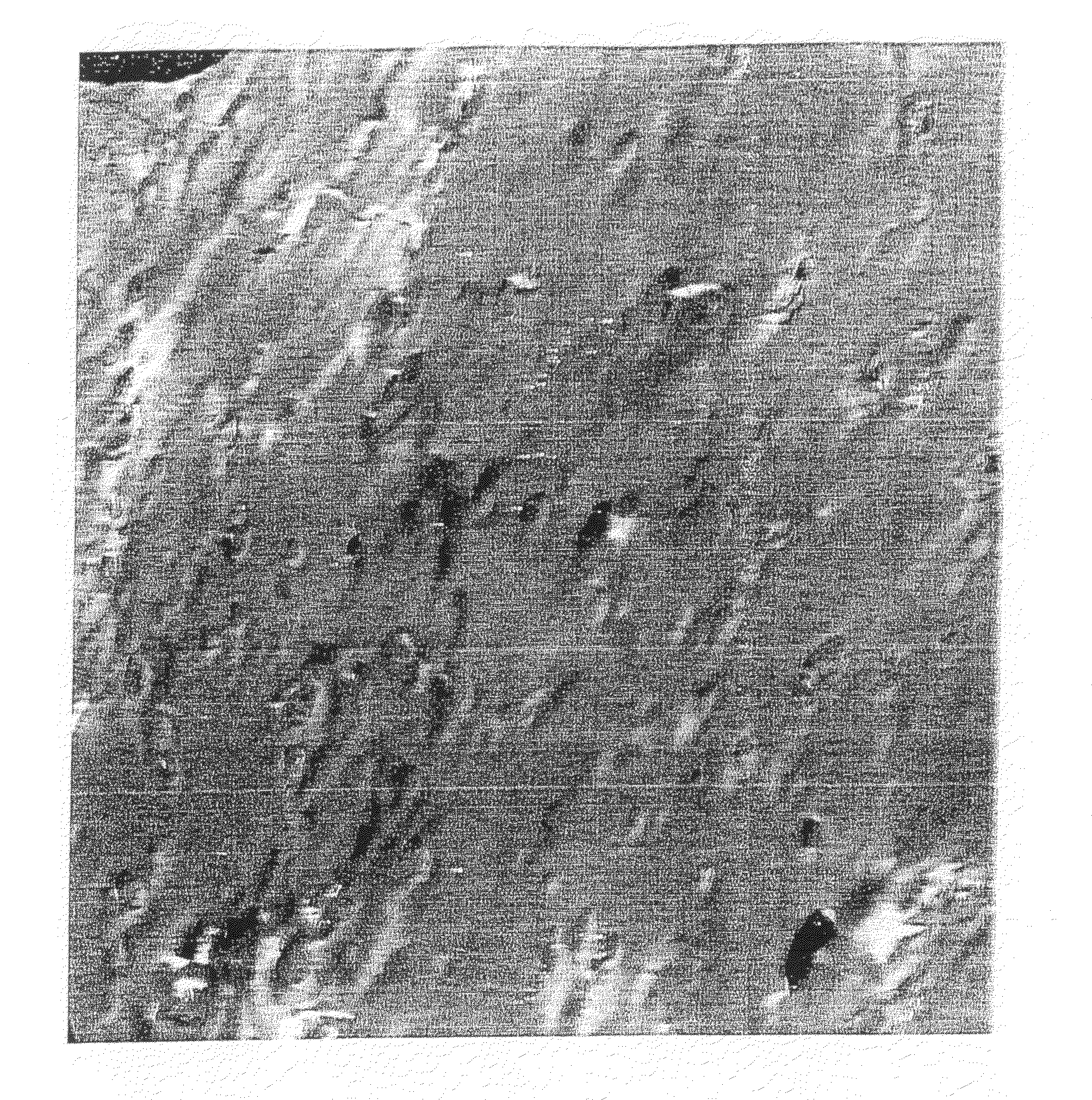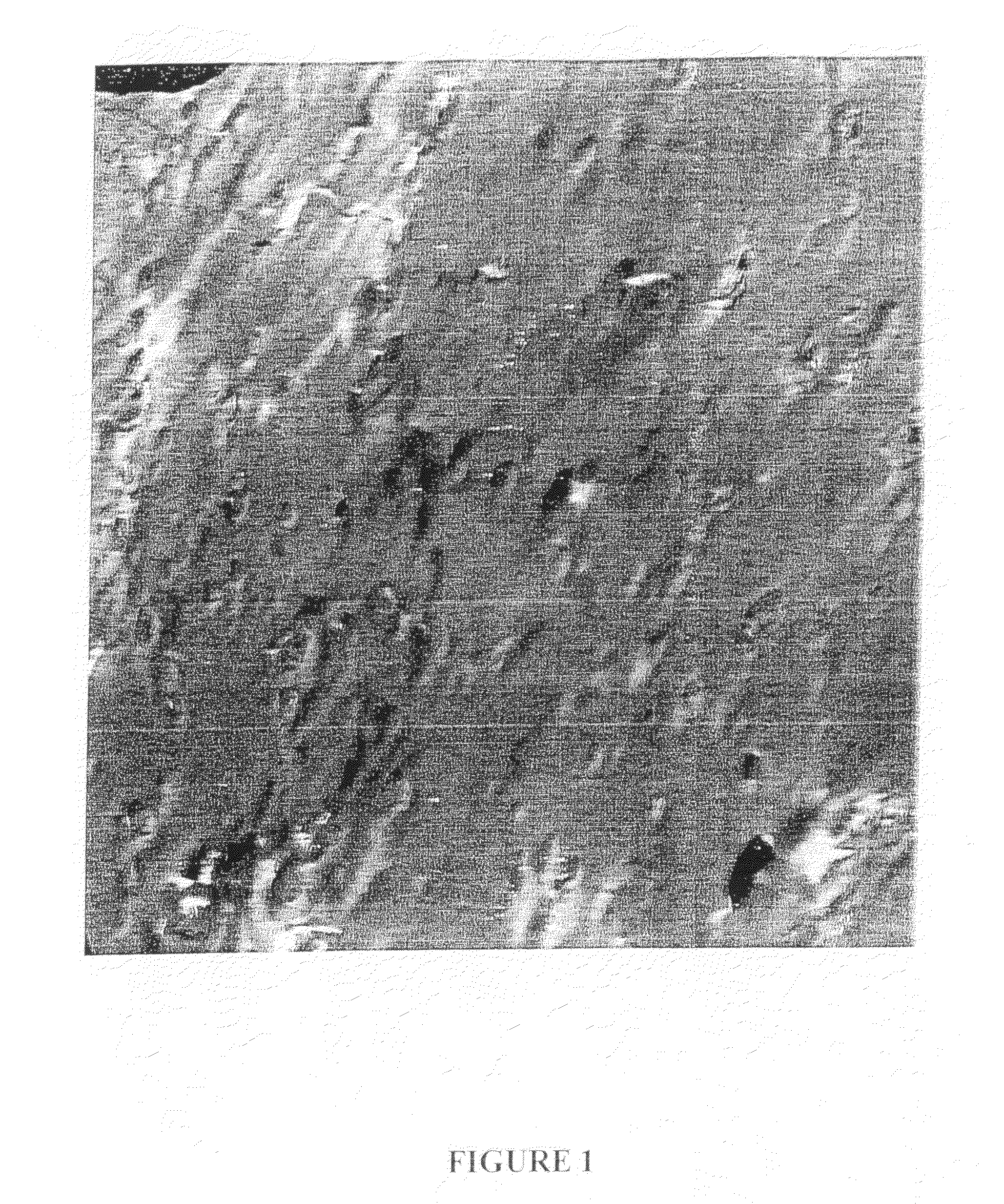Novel masterbatch thermoplastic delivery system
a delivery system and thermoplastic technology, applied in the field of thermoplastic nanocomposite additives, to achieve the effects of improving vapor and moisture barrier properties, improving uv stability, and improving barrier properties
- Summary
- Abstract
- Description
- Claims
- Application Information
AI Technical Summary
Benefits of technology
Problems solved by technology
Method used
Image
Examples
example 1
[0050]RDP treated sodium bentonite clay was loaded at 10% by weight RDP the balance clay using a dry-vortex fluidized addition process. The organoclay was added into thermoplastic PMMA at 30% by weight RDP clay bland balance PMMA using a Walter Pfeidzerer 30 mm twin screw co-axial extruder. The PMMA masterbatch was then added at 5% by weight organoclay with the balance final thermoplastic.
[0051]With polypropylene, the results obtained were as follows:
PP + PMMA masterbatch (5% final organoclay load)139423Flex Modulus, psi3371Tensile Strength at Yield, psi2167Tensile Strength at Break, psi0.85Izod Impact Strength, ft. lbs. / in.0.934Specific Gravity
[0052]When compared to the virgin polypropylene, the flexural modulus value in particular was increased (FM=111659) by ˜12% over the control. Tensile at yield drops only slightly 3371 / 3481=only 4% drop in tensile at yield.
example 2
[0053]RDP treated sodium bentonite clay was loaded at 10% RDP by weight with the balance clay using a dry-vortex fluidized addition process. The organoclay was added into thermoplastic PMMA at 30% by weight RDP clay bland balance PMMA using a Walter Pfeidzerer 30 mm twin screw co-axial extruder. The PMMA masterbatch was then added at 5% by weight with the balance organoclay final thermoplastic.
[0054]In polycarbonate, another plastic where pure RDP / and or BDP treated clay had exfoliated at a poor rate; the results of using the PMMA masterbatch were also very encouraging:
PropertiesPC + PMMA-MB at 5% final organoclay loadFlex Modulus, psi383425 / 333942 control = 15% increase in F-MTensile Strength at Yiel,9483 / 8941 control = 6% increased T-Ypsi
[0055]Although other properties decreased in the polycarbonate such as Notched Izod impact, these enhanced properties are examples of increases obtained by the exfoliation of the masterbatched organoclay being introduced and compatiblized with the...
PUM
| Property | Measurement | Unit |
|---|---|---|
| thermoplastic | aaaaa | aaaaa |
| weight | aaaaa | aaaaa |
| homogenous properties | aaaaa | aaaaa |
Abstract
Description
Claims
Application Information
 Login to View More
Login to View More - R&D
- Intellectual Property
- Life Sciences
- Materials
- Tech Scout
- Unparalleled Data Quality
- Higher Quality Content
- 60% Fewer Hallucinations
Browse by: Latest US Patents, China's latest patents, Technical Efficacy Thesaurus, Application Domain, Technology Topic, Popular Technical Reports.
© 2025 PatSnap. All rights reserved.Legal|Privacy policy|Modern Slavery Act Transparency Statement|Sitemap|About US| Contact US: help@patsnap.com


